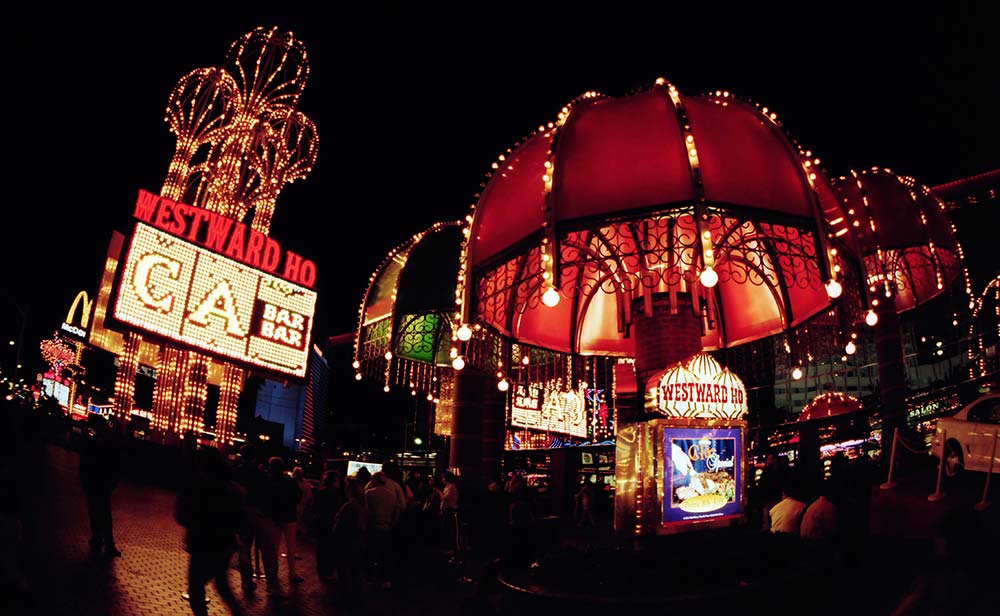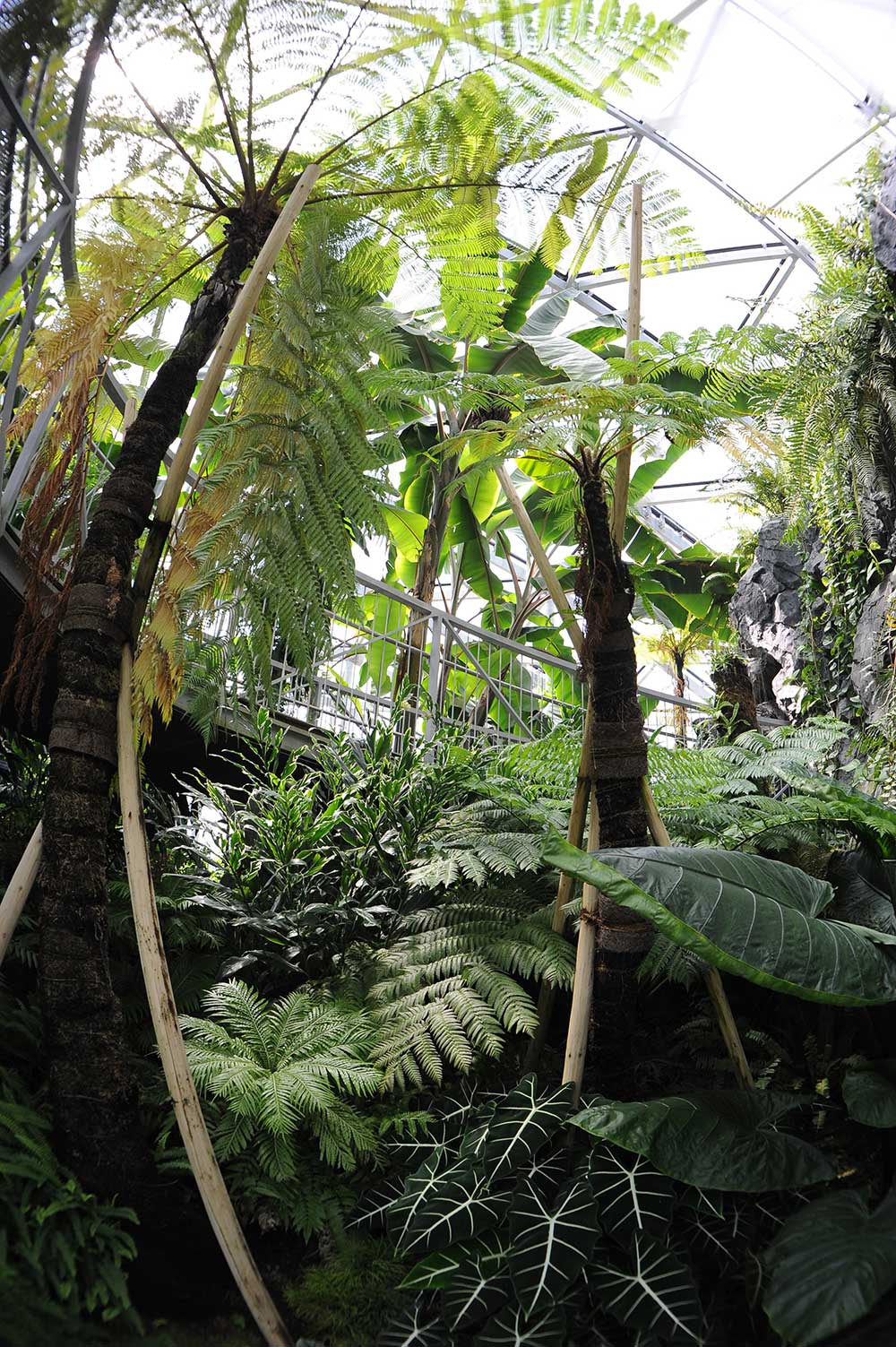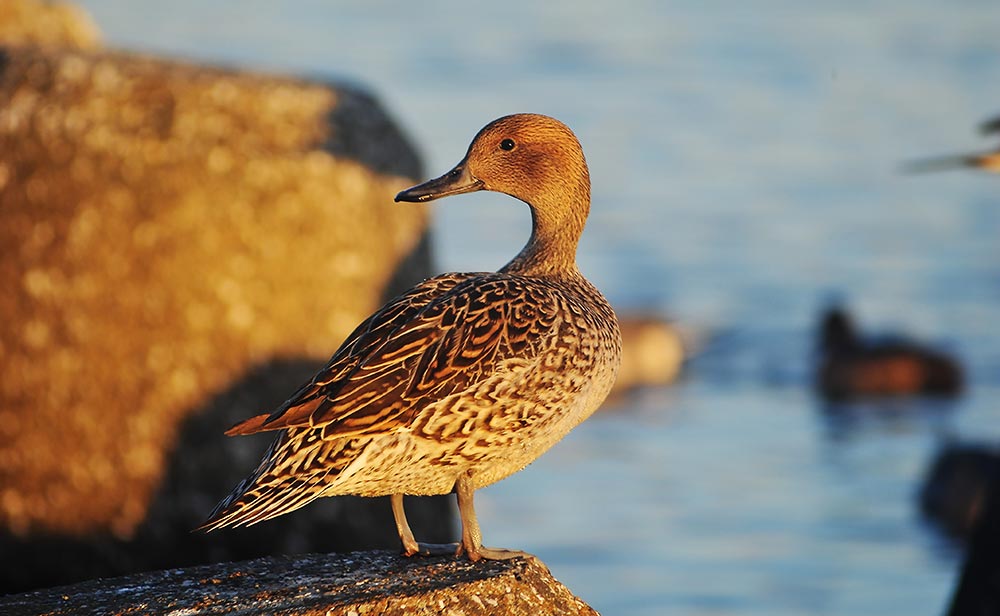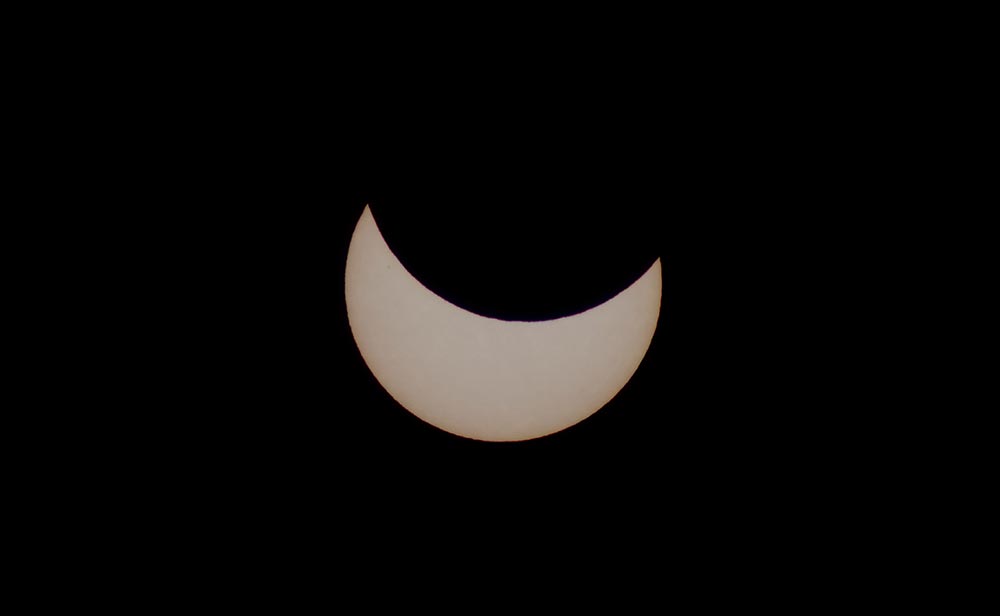NIKKOR - The Thousand and One Nights No.54

Nikon Fun Fun LensSet, Part 2 (Gyogyotto 20, Dodotto 400)
This tale continues with the topic discussed in Tale 52, covering the two remaining lenses in the Nikon Fun Fun LensSet. As these lenses were sold only in Japan, many are likely unaware of them. However, they are very memorable lenses for Sato and Ohshita. (Photo 1)
by Kouichi Ohshita
I. The Gyogyotto 20 (Fisheye Type 20mm f/8)
As noted in the previous tale, we planned the following four amusing lenses.
- 1.Soft focus lens
- 2.Fisheye lens
- 3.Macro lens
- 4.Super-telephoto lens
Of these four lenses, the fisheye lens was the one that I found the most challenging. Naturally, Mr. Tsukamoto told me that as we were not to develop a full-scale fisheye lens, it need not offer a 180-degree angle of view. Rather, excessive distortion, a broad angle of view, and amusing imaging capabilities would be sufficient. However, simply getting the lens to form images using light from a broad angle of view is itself difficult. As it would be fisheye lens, I wanted it to cover and angle of view of roughly 150 degrees. I first considered a structure similar to that of peep holes used in doors with a strong concave lens element in the front group and a strong convex lens element in the rear group.
However, this structure makes it impossible to compensate for lateral chromatic aberration generated by the concave lens element in the front group. What to do?
While I was considering the possibilities, my co-workers who also participated in the year-end round-table discussion including Mr. Sato came to me with ideas that they had been working on on the side.
"What you need is to use doublets both in the front and rear groups that eliminate color independently."
"But this sort of structure will result in excessive distortion and a narrower angle of view."
"We should try dividing the front group into concave and convex lens elements."
"We should achieve sufficient performance with a structure comprised of four elements in three groups."
"But a three-group structure might require optical adjustment."
We examined a variety of structures.

While we were doing this, a different approach presented itself. It was a structure comprised of three elements in three groups with which a thick concave meniscus lens element whose convex surface faced the front group was inserted between the highly concave front group and the highly convex rear group.
While compensation for spherical aberration and axial chromatic aberration was insufficient, compensation for lateral chromatic aberration and astigmatism was excellent.
This will work! If this concave meniscus lens element can be joined with the convex lens element in the rear group, couldn't we make a structure comprised of three elements in two groups? I proceeded with design by focusing on improvements to this type of lens. The result was the lens structure illustrated in Figure 1.
The most important feature of this lens is the second extremely thick concave meniscus lens element. While this structure first creates a virtual image, with its wide view distorted by the first strong plano-concave lens element, and turns it into a final image with the third convex lens element, achieving the distortion and broad angle of view characteristic of fisheye lenses, it does not enable compensation for lateral chromatic aberration, axial chromatic aberration, or spherical aberration. This is where the second lens element comes in. The surface of the second lens element is convex. The effects of this convex surface can be used to compensate for lateral chromatic aberration generated by the first lens element. On the other hand, the imaging-side of the second lens element joined to the third lens element has a highly concave surface. This effectively compensates for spherical aberration and axial chromatic aberration generated by the third lens element. By making the second lens element thick and giving separate function to the surface of the object side and the surface of the imaging side, we were able to achieve a simple structure comprised of three elements in two groups that provided good compensation for a variety of forms of aberration.
II. Trial production
With establishment of a possible design for this fisheye lens, an order for trial production of four lenses was issued. However, as very little time had passed since work on the design had begun, we were rushing with this fisheye lens. Performance increased day by day as the design process progressed. Our initial goal was to achieve performance that resulted in visually satisfying images with printing at L (89 x 127 mm/3.5 x 5 in.) size. However, my own design goals gradually changed. "Let's create a lens that press and advanced amateur photographers can use in emergencies!"
The Gugutto (Macro 120mm f/4.5) introduced in Tale 52 was Nikon's only lens that could be used for soft focus. I wanted the super-telephoto lens to be small enough and light enough to be easily stored and carried in a camera bag, and for the fisheye lens to be used as an ultra wide-angle lens that was not bound by normal constraints in adverse conditions, such as near water spray. My own impression of the sorts of situations in which the lens would be used was solidified. It would be an ultra wide-angle lens that allowed users to get in the middle of the action during champagne fights and beer showers.
I quickly presented my drawings and trial production was finally completed. Normally, when trial production is completed, projection is inspected and then the quality assurance/product evaluation department evaluates performance with MTF measurement and test shots. However, before any of this happened, Mr. Tsukamoto and I were told to take some test shots ourselves. No matter how many lenses a person designs, taking test shots with a trial production model is always exciting. How will a lens constructed of just two or three lens elements render images? We took some test shots when we have time during our work day over a period of two days and asked our co-workers to develop the films, and print the photos.
The printed photos far exceeded my expectations. I was most amazed by the sharp and clear rendering of this fisheye lens. Until I saw the results, I honestly thought that manufacturing and releasing this lens would be very difficult. It is a lens that Mr. Tsukamoto and I examined unofficially on our own, and one far removed from normal camera product planning. I did not know how much time and effort we would need to get it approved for manufacture and release by everyone from my immediate superiors all the way up to the president of the company. However, after looking at the printed test shots, I found myself overflowing with the desire for everyone to use this amusing lens, and to share my own surprise at how well it rendered images.
III. A door of opportunity opened
Achieving my desires was rather anti-climactic. Even with the official evaluation later implemented, the results backed up the results we had achieved with our own test shots. We then attached actual photos we had taken to our report to Mr. Tsukamoto's superior and requested manufacture and release of the lens. Approximately two weeks later, I received word from Mr. Tsukamoto. "Mass production of that amusing lens has been approved, so get to it!"
However, there were conditions that surprised me. The lens was to be sold only in Japan as part of a three-lens set that did not include the soft focus lens. Only 5,000 sets were to be manufactured, and they would be released in December of that year (1995). A small team of about 10 people was created in a rush. There were so many things to be determined, and no time to do it before the scheduled release.
The first decision to be made was the name of the lens. As Mr. Tsukamoto had said from the beginning that this would be a series of amusing lenses, we quickly decided on the name, Fun Fun LensSet. In addition, each lens would not be named for its focal length and aperture, such as "400mm f/8". Rather, we decided to give them endearing nicknames. Thus, Gyogyotto,Gugutto/Fuwatto, and Dodotto.
As Mr. Tsukamoto wanted the boxes to be conspicuously displayed at retailers, we decided on unique packaging with an illustration of a straight-faced cartoon ostrich on a light yellow-green background.
"What if we included stickers that customers could use however they want?"
"I'd like the reference manual to look like it was handwritten so it appears less stiff and formal."
"The part left over when the Gugutto/Fuwatto is used in its "fuwatto" state should fit perfectly in a film cartridge case."
One idea after another was proposed, and the team came together to continue to consider all possibilities with the small budget available to us. There are few opportunities that allow us to realize our own ideas, and to manufacture and release a product. It was truly an exciting and intense time.
Along with the manufacture and release of the lenses, Mr. Tsukamoto and I did design changes for further cost reductions.
IV. The Dodotto 400 (Tele 400mm f/8)

While specifications did not change very much, there is likely no other lens that changed as much from the planning stage. Intended to be a compact super-telephoto lens, the 400mm, f/8 specs were quickly and easily determined. This is because a 300mm focal length would be covered by telephoto zoom lenses, but support for a 500mm focal length would make a lens too big. If we made a 400mm super-telephoto lens, we could place priority on core performance with the same two-elements-in-one-group structure used for telescopes. Optical design of the lens was quickly finalized. On the other hand, mechanical design took more time because the lens had to be small enough to make it easy to carry around. Because the lens is constructed of two elements in one group, the total length is approximately 40 cm.
Mr. Tsukamoto must have been very troubled by this. With trial production, the lens had a two-stage mechanical barrel. Results achieved with test shots were not bad, but the team was not happy with its operation due to the added weight of the mechanical barrel. In addition, assembly required to get the lens from its storage state to the state with which it could be used with shooting was troublesome.
After discussing the matter, we decided to change the design to one that increased the number of lens elements, but enabled a shorter total length. If we could change the structure from a two-stage barrel that extended and retracted to an elastic single-stage barrel structure, one metal tube could be eliminated for significant reduction in both weight and cost. The result was the lens structure illustrated in Figure 2.
The front lens group was comprised of two elements with convex characteristics, and the rear lens group was comprised of two elements with concave characteristics, a structure commonly used with telephoto lenses. Up to that point, we had focused on a structure with no more than three lens elements. However, this was a choice we had to make in order to reduce the total length of the lens. By using a common telephoto structure, some distortion was generated, but performance at the edges of the frame was significantly increased. As this design more than satisfied requirements for 35mm-format angles of view, peripheral illumination sufficient for use with medium-format (645) cameras was preserved.
Similarly, the design was modified with simplification of the mechanical structure from that of conventional barrel structure to one that enabled assembly and disassembly with a great range between fully extended and fully retracted, and also reduced costs.
V. Gyogyotto 20 (Fisheye Type 20mm f/8) rendering

Let's take a look at Gyogyotto 20 (Fisheye Type 20mm f/8) rendering with sample images.
As you can see in Photo 1, this lens is designed with a simple cylindrical shape, providing a good fit with even current full-size digital SLR cameras. Because this is a slow lens with a maximum aperture of f/8 intended for use with ISO 400 film, use with low-sensitivity film is greatly restricted. However, because sensitivity can be freely adjusted with digital cameras, use with these cameras is much more flexible.

Lens: Gyogyotto 20 (Fisheye 20mm f/8)
Camera: D700
Shoot Mode: Aperture-priority auto mode
ISO: Auto
White Balance: Auto

Lens: Gyogyotto 20 (Fisheye 20mm f/8)
Camera: F301
Shoot Mode: Aperture-priority auto mode
Film: HG400
Negative Scanned

Sample 3
Lens: Gyogyotto 20 (Fisheye 20mm f/8)
Camera: D700
Shoot Mode: Aperture-priority auto mode
ISO: Auto
White Balance: Auto
The most important feature of this lens is the sharp and clear rendering made possible by the simple structure of three elements in two groups. Sample 1 is a landscape that is partially backlit. While including light sources in the frame when ultra wide-angle lenses are used is often unavoidable, very little ghost or flare is visible in images captured with this lens, even if a light source is included in the frame. In addition, with the exception of the extreme corners of the frame, the image is very sharp. While sharpness is quickly degraded in the corners of the image, this is because rendering in the four corners was sacrificed so that priority could be placed on sharpness in the middle portions of the frame as images are cropped slightly with printing from negatives.
Sample 2 is a bright night landscape captured with color negative film. I'm sure you can see just how little coma flare and chromatic aberration there is.
Sample 3 is an image of a subject captured at a relatively short distance. Because this is a fixed focal length lens, focus is not as sharp if the subject is too close. Users should take care to maintain a distance of at least one meter from their subjects.
VI. Dodotto 400 (Tele 400mm f/8) rendering

Now let's look at Dodotto 400 (Tele 400mm f/8) rendering.
Sample 4 is a photo of a pintail duck. 400mm is said to be the standard focal length for photographing wild birds. While this photo was taken in the evening, when light was dim, capture was made possible by increasing sensitivity. There is also no peripheral illumination falloff.
Sample 5 is a photo of Mt. Fuji in silhouette after sunset. As you can see in Photo 2, this lens is structured for assembly and disassembly. As the far end of the lens has a smaller diameter, stray light that occurs in backlit and partially backlit conditions results in flare that often makes the image appear flat. This can be avoided by using a lens hood that helps to prevent stray light from entering the lens.

Lens: Dodotto 400 (Tele 400mm f/8)
Camera: D700
Shoot Mode: Aperture-priority auto mode
ISO: Auto
White Balance: Auto

Lens: Dodotto 400 (Tele 400mm f/8)
Camera: D700
Shoot Mode: Aperture-priority auto mode
ISO: Auto
White Balance: Auto

Lens: Dodotto 400 (Tele 400mm f/8) with teleconverter and D4 filter
Camera: F2
Shutter speed: 1/1000sec
Film: G400
Negative Scanned
Sample 6 is a photo of the partial solar eclipse that occurred in March of 1997. The sun and the moon are reflected at a size of approximately 1/100 the focal length on film. Because formation of the sun is too small at 400mm, a teleconverter can be used to increase its size. While teleconverters are convenient for expanding the focal length of a lens, because chromatic aberration exhibited by the lens is also magnified, some color fringing around the edge of the sun is visible. As ED lens elements that reduce chromatic aberration could not be used with the Dodotto 400 due to cost restrictions, a magenta fringe often occurs around the edges of high-contrast subjects.
VII. The power of photos
In this way, the Nikon Fun Fun LensSet was released on schedule in December of 1995. Thinking back, it was an extremely intense year that began with a round-table discussion at which many ideas were unearthed, and which seemed to pass in an instant.
The real secret to the ease with which we received approval to release these lenses was due to the fact that Mr. Tsukamoto's superior was so pleased with the test shots we included with our report that he readily appealed to the general manager of the department and the president of the company for the release of the products.
This set of amusing lenses likely cleared the way to manufacture and release with their power to capture amusing and unique photos. With development of these lenses, we were never told to achieve a certain level of resolution or MTF performance. What mattered most was that the photos taken by the team were truly interesting. These lenses remind users of just how fun photos and interchangeable lenses can be.

NIKKOR - The Thousand and One Nights
The history of Nikon cameras is also that of NIKKOR lenses. This serial story features fascinating tales of lens design and manufacture.

